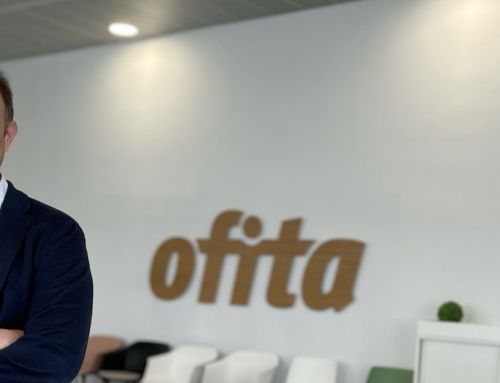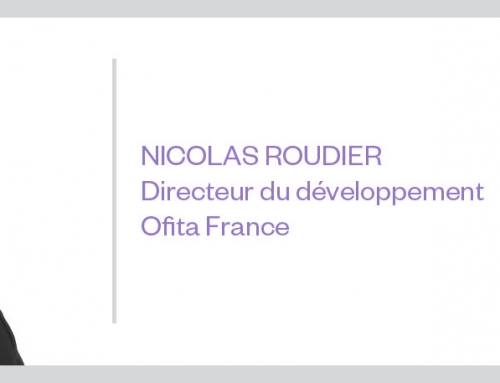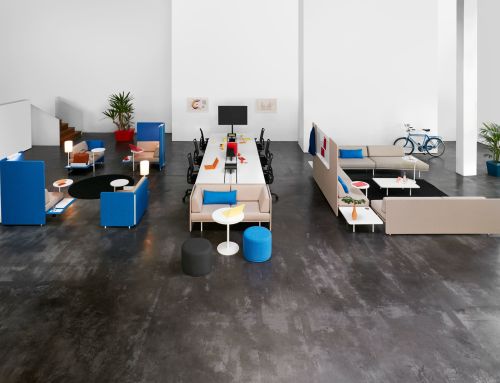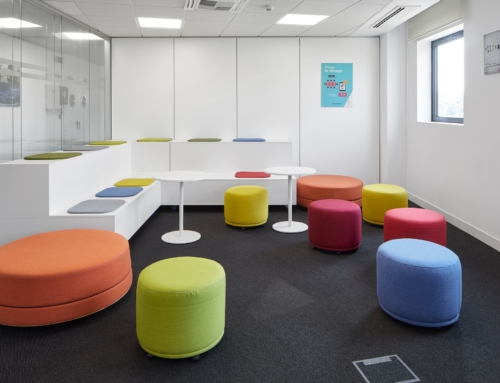“Agile working methodologies need new workspaces”
Scrum, agile, kanban… all words commonly used in software development but unknown outside this field. Until now. These are just some of the agile working methodologies that arose in the world of IT during the second half of the 1980s and the start of the 1990s and which are attracting the interests of all sorts of companies. Businesses have immersed themselves in processes of cultural transformation, with new, more agile and flexible ways of working. It’s a response to the vertiginous changes of a society defined by hyper-connectivity and shared knowledge.
We speak to Juan Gasca, CEO and founder of Thinkers Co. about these and other increasingly common dynamics in organisations.
“In the current climate of uncertainty, there’s no longer space for more traditional product development processes like the waterfall model. We have to try to work in a more interactive way, establishing specific shorter-term goals. This is something these agile methods have been trying to address. Agile working is a project management philosophy that covers a number of different methodologies. For example, there are the pure versions, such as scrum and kanban, used by IT departments on a daily basis to develop products quicker and with as few errors as possible. However, there is also a subset of practices and methods that are not completely agile or not categorised as agile methodologies but nonetheless align with certain principles based on scoping, defining, prototyping, learning and developing.”
The methodologies mentioned by Juan Gasca include “Design Thinking”, a way of creating products and services that aim to satisfy the needs of users as fully as possible, making them an active part of the creation process.
There are others, such as Lean Startup, an evolution of the traditional lean concept applied to the specific case of launching startups. Validated learning, experimentation and iteration are the three foundations of this methodology, which aims to reduce the risk involved in launching new products and services. Customer development is key and the faster and cheaper, the better.
What type of projects are these methodologies used for?
The methodologies arose in IT departments and innovation teams, although they are now being used in all departments. We don’t just need these methodologies in order to launch and tackle pure innovation projects, we also need them to implement small-scale projects. For instance, they can be used by the human resources department to develop training or a remuneration project. Departments in all sorts of different areas are seeing the advantages of working in this way.
More than an innovation project—here, innovation is understood as the capacity to generate high value and disruption—we’re talking about small innovations that deliver continuous improvement or changes to which these methods for working can also be applied.
Are these forms of working the natural ecosystem for younger generations?
Agile methodologies attract all sorts of users and world views. In terms of their application, we have seen two opposing profiles of users who are embracing these methodologies.
On the one hand, there are staff with long careers who have, until now, had a set way of doing things but find themselves faced with the need or opportunity to change.
On the other, there are staff whose cultural background and approach to life is completely different to previous generations. They understand the tendency to work in cycles, in different companies and cities instead of having a single place of work for your whole life. The way they understand the world is clearly better suited to these ways of working.
However, these new models need a new kind of space
These new forms of working are resulting in different moments or needs in workplaces, based on intrinsic and intensive collaboration. There are points at which individuals take responsibility for their own tasks and are free to work but these are complemented by phases of working extremely closely together. Even for project launches and follow-ups, people need to come together and organise themselves. This organisation of tasks, this new way of coming together, cannot take place in a traditional workplace, around a table. More visual and dynamic solutions are required, spaces in which we can quickly get up, write things down, discussing things. So far, this need has been resolved on the fly using ad-hoc applications, constructions, applying Vileda paint to walls, purchasing whiteboards, and so on… But it’s not a proper solution….
Hence the collaboration between Thinkers Co. and Ofita, resulting in the launch of the Forthink line of furniture to “capture these dynamic visual ways of working.” Forthink is the solution for collaborative workplaces that need these new working methodologies.




